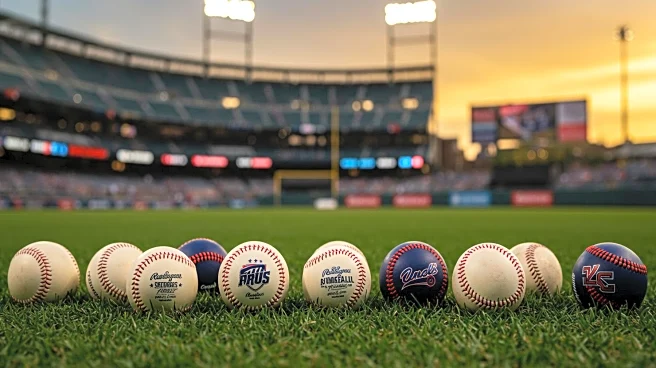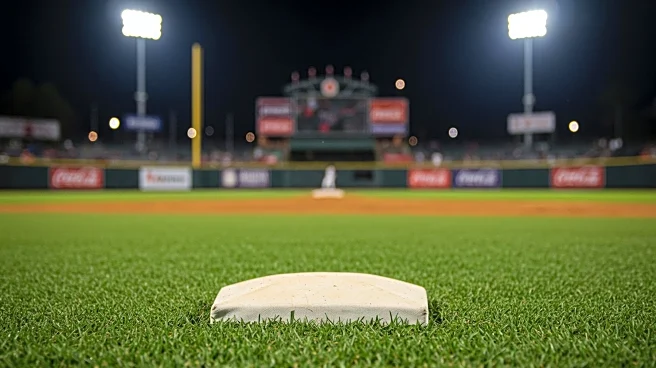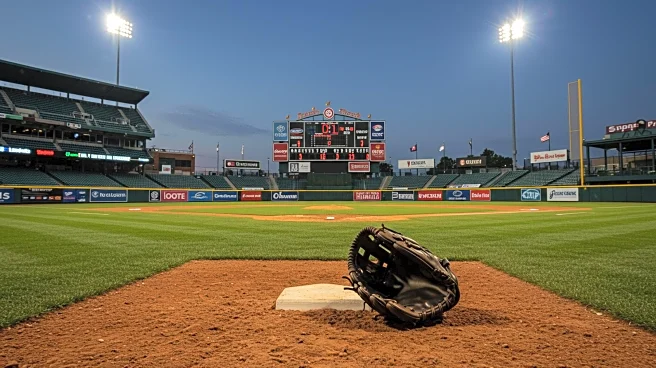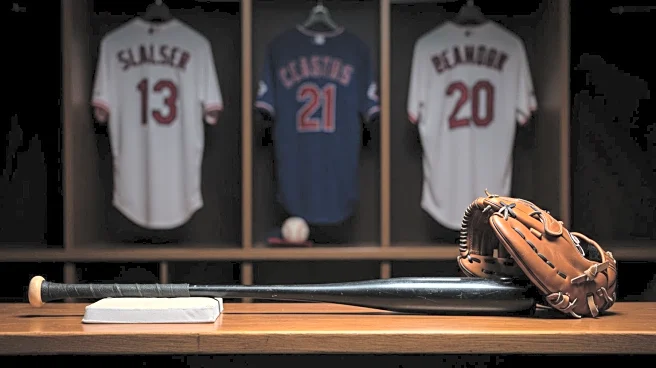What is the story about?
What's Happening?
The recent MLB trade deadline was notably quiet, with limited player movement across the league. According to a general manager, the primary reason for this inactivity was that 'nobody wants to give s--t up,' as reported by Jon Heyman of the New York Post. Despite the overall hesitance, some teams, like the San Diego Padres and the Philadelphia Phillies, made significant trades. The Padres acquired players such as Mason Miller, JP Sears, and Ramon Laureano, among others, by trading away some of their top prospects. This aggressive strategy has paid off, as the Padres have surged to the top of the NL West. Similarly, the Phillies secured Jhoan Durán and Harrison Bader from the Minnesota Twins, which has helped them maintain control of the NL East.
Why It's Important?
The reluctance to trade at the MLB deadline reflects a broader trend of teams prioritizing long-term player development over short-term gains. This cautious approach can impact the competitive balance within the league, as teams with strong farm systems may choose to hold onto their prospects rather than risk future potential for immediate success. The Padres and Phillies' willingness to trade top prospects for established players could set a precedent for other teams considering similar strategies. These moves could influence playoff races and ultimately affect the postseason landscape, as teams that made bold trades may gain a competitive edge.
What's Next?
As the MLB season progresses, the impact of these trades will become more apparent. Teams that refrained from trading may reassess their strategies if the Padres and Phillies continue to succeed. Additionally, the performance of the newly acquired players will be closely monitored to determine if the trades were beneficial. The outcomes could influence future trade deadlines, with teams potentially becoming more or less willing to part with prospects based on the success of this year's trades.
Beyond the Headlines
The quiet trade deadline raises questions about the valuation of prospects versus established players in MLB. Teams may need to balance the risk of trading future stars for immediate success, which could lead to a shift in how trades are approached in the future. This dynamic could also affect player development strategies and the overall market for trades in the league.
AI Generated Content
Do you find this article useful?











